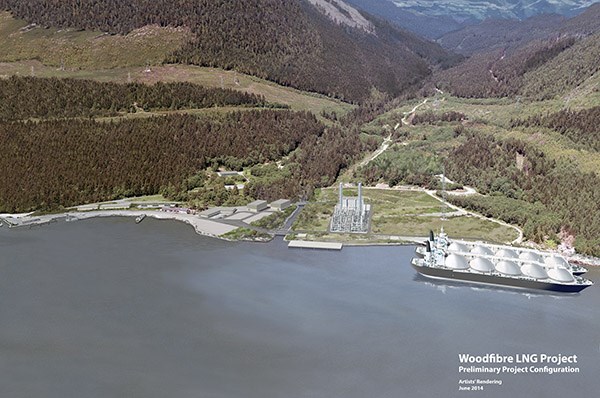The District of Squamish has drafted a letter to the Environmental Assessment Office outlining concerns about the proposed Woodfibre LNG export facility and associated FortisBC Eagle Mountain – Woodfibre Gas Pipeline Project.
At a committee meeting on Tuesday, council reviewed a draft response from the District of Squamish to the Environmental Assessment Office (EAO) regarding proposed liquefied natural gas projects slated for Squamish.
"While the District understands that this is a complex project and that establishing an LNG export industry in British Columbia is a significant objective of the provincial government, we have many substantial and well considered concerns as highlighted in this submission that we believe should be adequately addressed prior to issuance of any EA Certificate,” reads the conclusion of the letter to be signed by Mayor Patricia Heintzman.
Concerns outlined in the draft include: local issues such as possible harm to the marine environment from the seawater cooling system proposed for the Woodfibre LNG facility, and concern over protection of the Squamish Estuary and Wildlife Management Area from the proposed FortisBC natural gas pipeline.
Other issues include cumulative effects of the projects on Howe Sound at a time when there is evidence the Sound is recovering.
The document also address concern over regulatory oversight of the proposals and global issues such as the impact of hydraulic fracturing.
For each concern, the letter includes a request of the EAO from the district. For example, with the concern to the marine environment due to the noise impact in the water, the draft requests conditions of the granting of the EAO permit be that Woodfibre LNG be required to gather baseline acoustic measures and that noise that would impact the marine environment be minimized, monitored and reported.
In terms of the pipeline, Mayor Patricia Heintzman said she would like to see added to the letter or in a separate letter to the province something about the social impacts of FortisBC’s proposed route through the estuary, should the projects go ahead.
“I think this was something that was maybe misunderstood or not appreciated from the beginning, was what a lightening rod this particular issue would be and I worry about further community repercussions of going through the estuary from a budget side of things – should we need more policing?” said Heintzman. “So I think we need to communicate the social impacts of this decision – not only the environmental impacts through the estuary, but the social impacts of coming to our town from a community-divisiveness point of view.”
The draft will be further revised based on input from council and is expected to be discussed again, then submitted on April 30.
Council members debated some of the language and the tone set in the document. Councillor Karen Elliott said some concerns should be sternly worded, in particular in terms of the impact of the project to the marine environment.
“This is our opportunity to put very clearly what will work for this community in the long term. I don’t want to squander that opportunity,” said Elliott.
Councillors were in agreement that the Environmental Assessment process of the projects was frustrating.
The draft response includes a request to revamp several aspects of the EA application process to more fully involve citizen input.
Woodfibre LNG representative John French commented, “The conversation is ongoing and community members continue to talk to us about the proposed project. Woodfibre LNG is working hard to make sure the community priorities are considered.”




